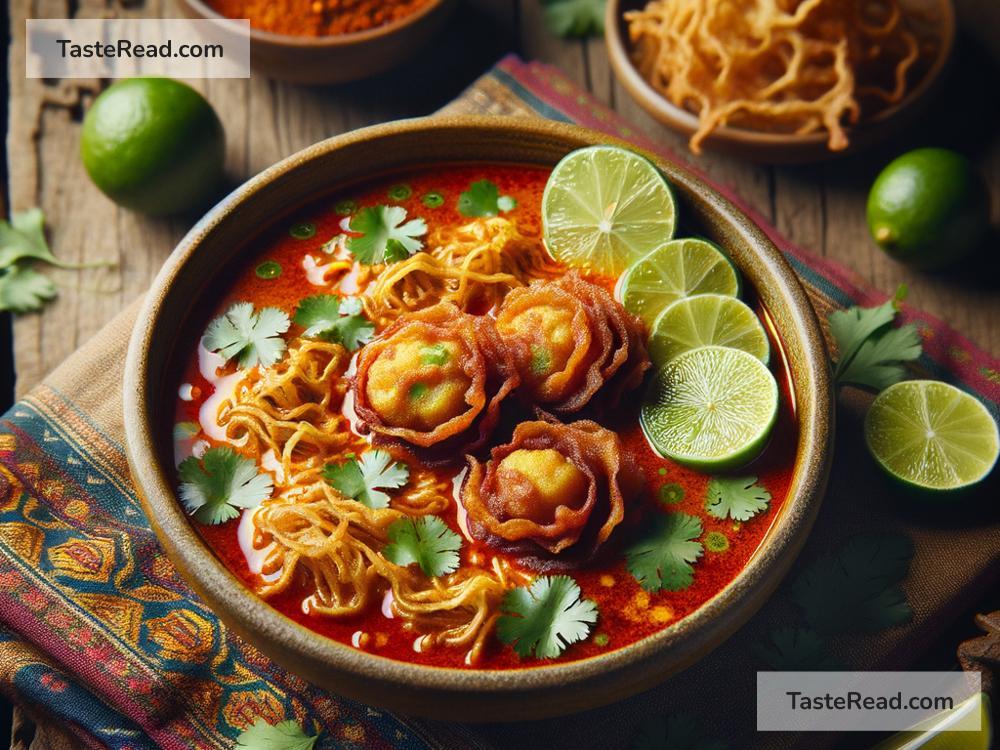How Burmese Mohinga Reflects Myanmar’s Culinary Identity
Nestled in the heart of Southeast Asia, Myanmar, formerly known as Burma, is a country rich in culture, history, and culinary traditions. Among its many treasures, the most emblematic dish that stands as a culinary ambassador to the world is Mohinga. This simple yet profoundly flavorful dish is not just a meal; it’s a reflection of Myanmar’s culinary identity, telling stories of the local geography, history, and the everyday life of its people.
Mohinga, at its core, is a fish broth noodle soup, typically enjoyed as a breakfast dish in Myanmar but equally relished throughout the day. The soup is a concoction of catfish simmered in a broth seasoned with lemongrass, onions, garlic, ginger, and turmeric, creating a harmonious blend of flavors that dance on the palate. Rice noodles, usually vermicelli, sit in this flavorful broth, accompanied by a variety of condiments and garnishes such as boiled eggs, crispy fritters, coriander, and lime wedges. The result is not just a meal but an experience, one that encapsulates the spirit of Myanmar’s culinary culture.
But why is Mohinga so significant, and how does it reflect the cultural identity of Myanmar? The answers lie in its history, its ingredients, and how it’s enjoyed by the Burmese people.
A Historical Prelude
Mohinga’s origins are somewhat shrouded in mystery, with different regions of Myanmar offering their own variations and claims to the dish. However, what stands undisputed is its long-standing presence in Burmese cuisine, evolving over centuries to adapt to the tastes and preferences of its people. This evolution reflects the historical journey of Myanmar itself, with influences from neighboring countries like India and Thailand, yet always retaining its unique Burmese essence.
Geography and Ingredients
The ingredients used in Mohinga are a testament to Myanmar’s diverse geography and available local produce. The country is blessed with fertile plains, rivers, and a long coastline, providing an abundance of fresh produce and seafood. Catfish, the main ingredient in Mohinga, is widely available in Myanmar’s rivers, making it a popular choice for this dish. The use of rice noodles highlights Myanmar’s status as one of the world’s largest rice producers. Moreover, the spices and herbs used, such as lemongrass, turmeric, and ginger, are commonly found across Southeast Asia but are combined in Mohinga in a way that creates a distinct Burmese flavor profile.
A Glimpse into Everyday Life
Mohinga is more than just a dish in Myanmar; it’s a staple of everyday life. Traditionally served as breakfast, it’s common to see street vendors and tea shops bustling with locals enjoying a bowl of Mohinga at the break of dawn. This daily ritual showcases the communal aspect of Burmese culture, where food is a reason to come together, share stories, and enjoy each other’s company. Mohinga is not reserved for any particular class or social group; it is enjoyed by everyone, making it a unifier in a country known for its diversity.
Cultural Significance
Understanding Mohinga’s place in Myanmar’s culinary identity also means appreciating its cultural significance. It represents resilience, tradition, and the art of balancing flavors, mirroring the Burmese people’s values. The preparation of Mohinga, which requires patience and care, reflects the meticulousness with which Burmese people approach their culinary practices, always striving for harmony in flavors and textures.
Mohinga: A Symbol of Myanmar
In essence, Mohinga is a symbol of Myanmar’s rich culinary heritage, embodying the flavors, history, and spirit of the Burmese people. It is a dish that invites you to explore beyond its ingredients, offering a window into the soul of Myanmar. Whether enjoyed by the bustling streets of Yangon, the tranquil shores of Inle Lake, or beyond Myanmar’s borders, Mohinga continues to be a ambassador of Burmese cuisine, inviting everyone to taste and appreciate its unique culinary identity.
So, the next time you find yourself savoring a bowl of Mohinga, remember that you’re not just enjoying a delicious meal; you’re experiencing a piece of Myanmar’s cultural heritage, one spoonful at a time.


